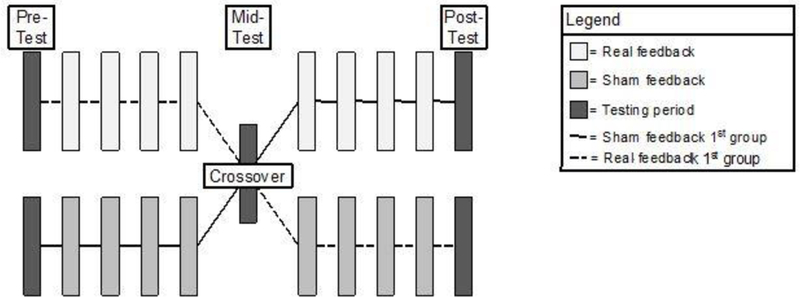Figure 3.

The crossover design used Each rectangle represents a block that consisted of 10 squats. The darkest rectangles represent the testing time in which no visual feedback was administered. The two rows of rectangles indicate the type of feedback used for training—either real or sham feedback. The solid and dashed black lines respectively denote the group who received the sham feedback first and the group who received the real feedback first The middle rectangle denotes the crossover point—the point that the feedback type was switched.
